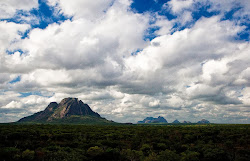
Charles Moore/Black Star
James R. Jones, the Grand Dragon of the North Carolina Ku Klux Klan, driving with his Klan robe to a rally in the mid-'60s.
Mr. Moore’s camera snapped the Rev. Dr. Martin Luther King Jr. being arrested in Montgomery, Ala., in 1958, and James Meredith integrating the University of Mississippi in the face of a screaming mob in 1962.
He photographed Bull Connor using dogs and high-pressure hoses on peaceful civil rights demonstrators in Birmingham, Ala., in 1963, and recorded a black man being viciously beaten by a white lawman during the “Bloody Sunday” march from Selma, Ala., in 1965.
These crisp, fluid black-and-white photographs appeared most prominently in Life magazine at a time when general-interest picture magazines remained such a powerful force that critics now speak of it as the “golden age of photojournalism.”
Both Senator Jacob K. Javits and the historian Arthur M. Schlesinger Jr. credited Mr. Moore’s images with building popular support for the passage of major civil rights laws in the mid-1960s. Critics have suggested that the fact that one does not see who is aiming the hose at the demonstrators seems to implicate the whole nation.
Mr. Moore, who was white, grew up in Alabama as the son of a Baptist minister, who not only denounced racism but who also occasionally preached in black churches. The son said he used his camera to continue the fight. But as a Southerner, he well knew the delicate line he had to walk.
On the one hand, he said in an interview with The Montgomery Advertiser in 2005, he refused to get on his knees and beg as racists had demanded. On the other, he said, he did everything possible to avoid confrontation, explaining that if he were arrested he couldn’t photograph.
“I’d let people trip me, jostle me, pull my hair and threaten to smash my camera,” he told The New Orleans Times-Picayune in 1997.
Hank Klibanoff, who with Gene Roberts wrote “The Race Beat: The Press, the Civil Rights Struggle, and the Awakening of a Nation” (2006), said in an interview Monday that Mr. Moore, almost always using a short lens, would immerse himself in the middle of the action. He often appeared in the pictures of other photographers who were standing back.
One of Mr. Moore’s images shook the author Paul Hendrickson to the core. The picture showed six Mississippi sheriffs and a deputy, some chortling, waiting to confront Mr. Meredith at Ole Miss. One appears to be showing the others how to swing a riot club.
Mr. Hendrickson wrote about the seven lawmen in “Sons of Mississippi: A Story of Race and Its Legacy” (2003). The photo is included in Mr. Moore’s 2002 book, “Powerful Days: The Civil Rights Photography of Charles Moore.”
“It was a two-second grab shot,” Mr. Hendrickson said on Monday. “The greatest photographers see the image before they click it.”
Charles Lee Moore was born in Hackleburg, Ala., on March 9, 1931, and took his first pictures with a Kodak Brownie. He served three years in the Marines as a photographer and then attended the Brooks Institute of Photography in Santa Barbara, Calif. He next applied for a job as a photographer with the morning and afternoon newspapers in Montgomery: The Montgomery Advertiser and The Montgomery Journal.
His training in fashion photography at Brooks helped him get the job, Mr. Klibanoff said. When Mr. Moore arrived at the newspapers’ office, Mr. Klibanoff said, he was sent to a country club where the photography editor was taking pictures of bathing beauties. The editor, who hated the job, was having trouble positioning everyone.
Mr. Moore took over, all went smoothly, and he was hired.
At the newspapers Mr. Moore quickly proved his versatility. An article in Editor & Publisher in 1961 praised him for “turning pictures of everyday people into dramatic, emotional experiences for readers.”
In 1962, Mr. Moore left the newspapers to start a freelance career. He worked for the Black Star picture agency, which sold much of his work to Life.
Mr. Moore is survived by his brother, Jim; his sons, Michael and Gary; his daughters, April Marshall and Michelle Moore Peel; seven grandchildren; and three great-grandchildren.
Mr. Moore went on to cover the Vietnam War and many other trouble spots. He then decided he wanted to “shoot beauty” and moved on to nature, fashion and travel photography, in addition to corporate work. But he always said his civil rights work was his most important, and in 1989 he received the inaugural Kodak Crystal Eagle Award for Impact in Photojournalism.
His civil rights success resulted in part from cunning and resourcefulness. After being arrested in Birmingham in 1963, he was desperate to get out of town with his film the next day, he said in a biography prepared by Black Star. But a police car blocked the entrance to the airport.
He and his colleagues sneaked along the side of the terminal building and boarded the airplane just as the stairs were about to be pulled away.
“We flew away as fugitives from justice,” Mr. Moore said.





No comments:
Post a Comment